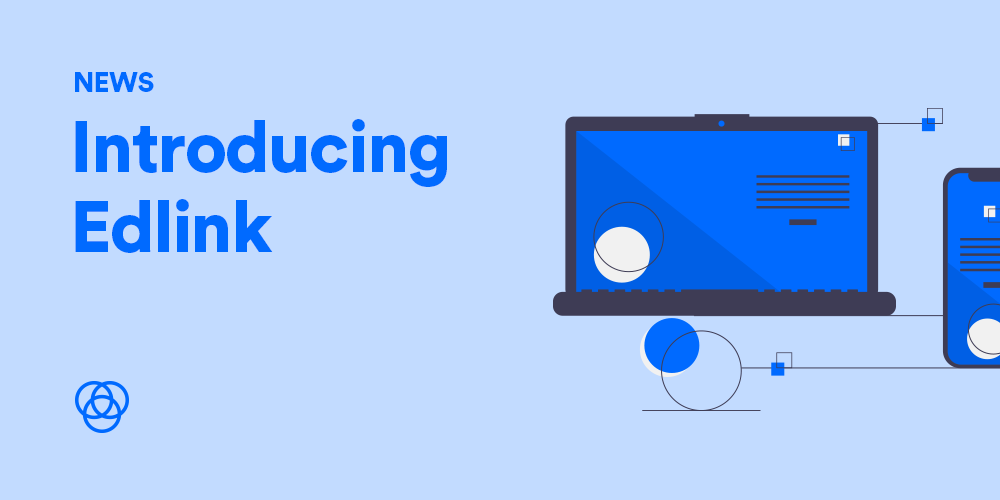My Co-founder Amanda and I are excited to announce the 1st release of Edlink – the fastest way for elearning applications to provide seamless data integration for schools. Edlink is our response to years of integration pain and the equally frustrating experiences faced by the end-users of educational software. Edlink incorporates feedback from hundreds of educators, organizations, and developers – mixed with a healthy dose of our own unique vision. We hope it will provide a practical and powerful step forward for those who strive to build the connected classroom of the future.
Why We Built Edlink
The educational software space has matured quickly over the past 10 years. The world has seen the launch of hundreds of new tech-first companies, as well as the progression of the traditional publishing world into a new digital age. Students and teachers interact with a multitude of online platforms on a daily basis, but until now, these apps have been limited in their integration capabilities.
We believe that educational data system integration is the single largest area for improvement within the educational software space. This problem affects tens of millions of people across hundreds of digital products. Our primary goal is to facilitate a new generation of two-way communication between learning platforms. Not only will tightly-coupled integrations save teachers countless hours of frustration – we believe that it will result in the development of brand new classroom workflows. Fundamentally, integrations can improve strategies for analyzing student performance and improving student outcomes.
But the problem isn't an easy one to solve. There have been many attempts over the past 2 decades to create educational data standards by which applications can work together. These standards are important, but they are not enough to tackle the real integration problems that administrators and learning apps face every day. Companies can be overwhelmed by the number of different standards out there – and then surprised by the varying “quirks” in the implementation of these standards.
To bridge the gap between the multitude of data standards available, Edlink has written custom integrations with a number of different educational data systems to ensure a modern and consistent experience for elearning apps. At Edlink, we believe that building solid connections with a smooth user experience can dramatically boost the adoption and efficacy of educational software platforms.
How Edlink Works
At its core, Edlink is a bridge between various educational data systems. It provides a standardized data format for two-way communication between sources (like a school's LMS or SIS) and applications (like a reading platform). By connecting to Edlink, schools can provide access to their data, and companies can consume it to provide a better experience for students, teachers, and admins.
Edlink is not a standard itself. We’ve simply performed the heavy lifting required to integrate with a variety of different educational data systems – regardless of the method of integration that they require. Instead of trying to convince other edtech companies to take the risk of conforming to a new standard, we’ve brought their data into our platform ourselves.
Edtech developers can start by requesting a set of free API keys. These keys (along with our extensive documentation) can be used to connect to a single set of API endpoints. These endpoints allow your platform to retrieve administrator-level roster data, or perform actions on behalf of a single user.
For example, developers could use Edlink to import users from a school district, allow users to sign in with Canvas, and then create a homework assignment in the user Canvas course.
Once a data source is connected, administrators can grant access to certain types of data to the desired learning platforms.
Edlink has usage-based pricing, so platform developers only pay for what they use. Pricing is based on the number of unique users whose data is provided to the learning platform in a given month.
Protecting Student Data
Shifting to online platforms can be a double-edged sword. The internet poses new risks that can be hard for teachers and students to understand and hard for technology experts to address.
Protecting student data is extremely important in an environment where breaches are commonplace. Data repositories become increasingly valuable as teachers and students shift more and more of their daily lives to online platforms. Getting an accurate assessment of your exposure as a school administrator or an elearning app provider is a headache at best (and impossible at worst). In the unfortunate event that there is a problem, tracing the root cause can be its own challenge.
At Edlink, we strive to give administrators unprecedented control and visibility into data access and usage.
We do this in a few key ways:
- School admins can control the source of their data. Data no longer needs to come from CSV files or the student information system. Exports from these systems can contain data that is far more sensitive than most publishers require (for example, a student's home address or social security number). With Edlink, school admins can choose to use systems (like their LMS) as the source of data.
- School admins can selectively grant access to specific data or application functionality. Edlink makes it easy to limit the scope of data that admins choose to share with integrated applications. With a few quick checkboxes, admins can limit the shared data to individual schools or courses, and even limit the Edlink functionality that a third-party application can access.
- Edlink provides admin access to extremely thorough data logs. Admins can get deep visibility into all data that Edlink consumes, stores, and provides to a school's set of integrated applications.
- Edlink maintains strict data retention policies on the limited data that it does store. Thoroughly deleting old student data can reduce risk dramatically (and is required by law in many jurisdictions).
- Edlink maintains full compliance with student data privacy laws. We are compliant with FERPA, COPPA, GDPR, and several other legal requirements.
- Personally identifiable information (PII) is always stored in an encrypted format. We store all student and teacher information with AES 256 encryption at rest. This extra layer of encryption provides additional protection in the event that our database is ever compromised.
How to Get Started
For elearning apps, getting started with Edlink is easy!

